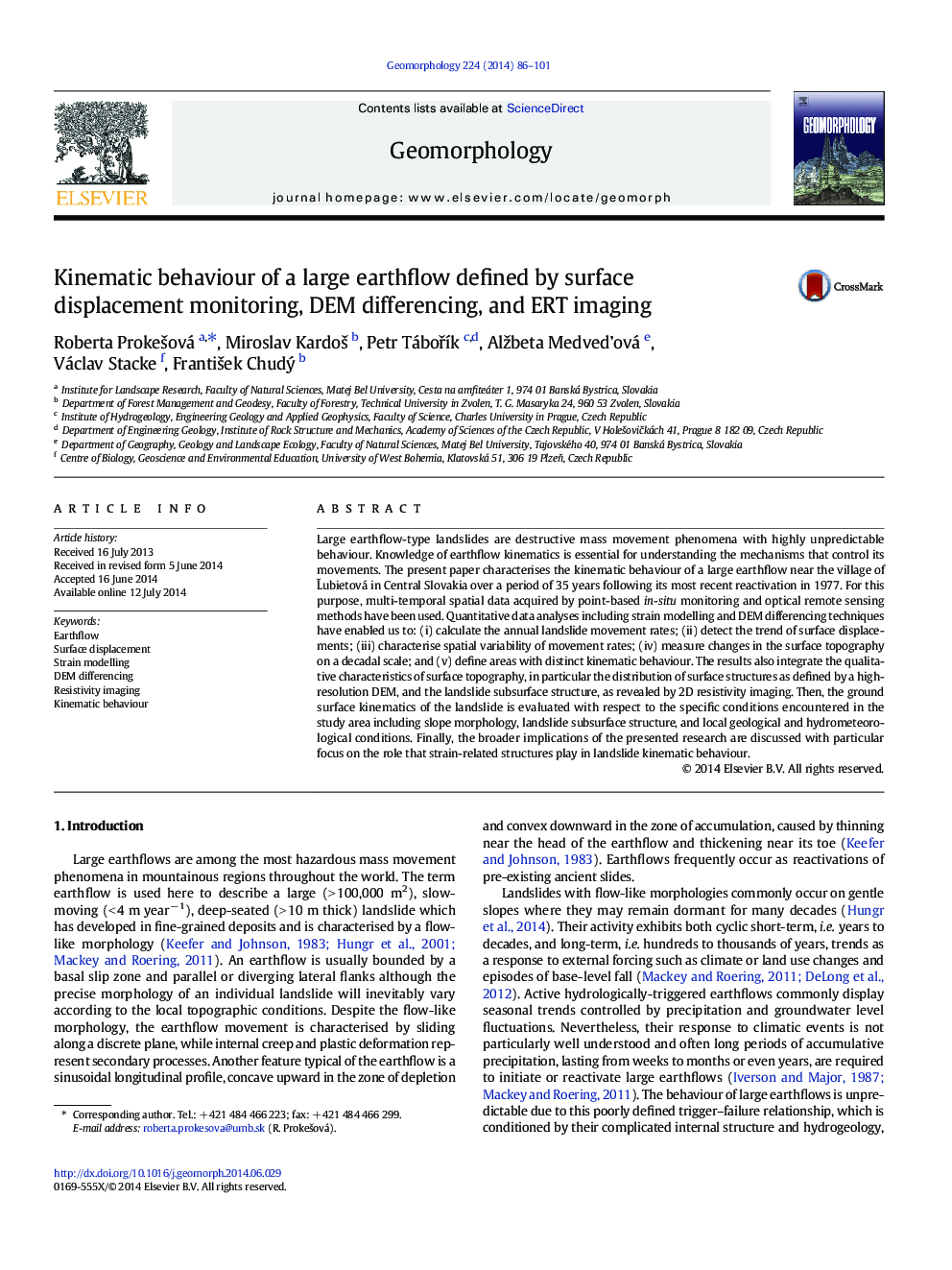| کد مقاله | کد نشریه | سال انتشار | مقاله انگلیسی | نسخه تمام متن |
|---|---|---|---|---|
| 4684423 | 1635425 | 2014 | 16 صفحه PDF | دانلود رایگان |

• Joint use of multi-temporal multi-source data to investigate a large earthflow
• Trends of surface displacements are analysed over a 35-year period.
• The pattern of surface strain is defined and areas with distinct kinematics are identified.
• A complex landslide subsurface structure is revealed.
• Strain-related surface structures markedly affect the landslide kinematic behaviour.
Large earthflow-type landslides are destructive mass movement phenomena with highly unpredictable behaviour. Knowledge of earthflow kinematics is essential for understanding the mechanisms that control its movements. The present paper characterises the kinematic behaviour of a large earthflow near the village of Ľubietová in Central Slovakia over a period of 35 years following its most recent reactivation in 1977. For this purpose, multi-temporal spatial data acquired by point-based in-situ monitoring and optical remote sensing methods have been used. Quantitative data analyses including strain modelling and DEM differencing techniques have enabled us to: (i) calculate the annual landslide movement rates; (ii) detect the trend of surface displacements; (iii) characterise spatial variability of movement rates; (iv) measure changes in the surface topography on a decadal scale; and (v) define areas with distinct kinematic behaviour. The results also integrate the qualitative characteristics of surface topography, in particular the distribution of surface structures as defined by a high-resolution DEM, and the landslide subsurface structure, as revealed by 2D resistivity imaging. Then, the ground surface kinematics of the landslide is evaluated with respect to the specific conditions encountered in the study area including slope morphology, landslide subsurface structure, and local geological and hydrometeorological conditions. Finally, the broader implications of the presented research are discussed with particular focus on the role that strain-related structures play in landslide kinematic behaviour.
Journal: Geomorphology - Volume 224, 1 November 2014, Pages 86–101